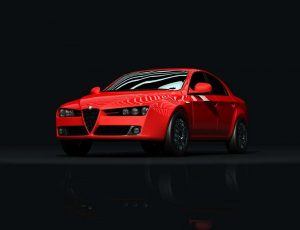- This topic is empty.
-
AuthorPosts
-
17/06/2024 at 16:15 #2884
In the modern era, automobiles have become an integral part of our lives, revolutionizing transportation and mobility. Behind the scenes, a complex network of electrical components powers these vehicles, ensuring their smooth operation and enhancing safety. In this forum post, we will delve into the world of automotive electrical parts, exploring their functions, importance, and advancements.
1. The Battery:
At the heart of every car’s electrical system lies the battery. Acting as a power reservoir, it supplies electricity to start the engine and provides energy for various electrical components. Modern vehicles often employ advanced battery technologies, such as lithium-ion, to enhance performance and longevity.2. Alternator:
While the battery initiates the electrical system, the alternator takes over once the engine is running. This component generates electricity by converting mechanical energy from the engine into electrical energy, replenishing the battery and powering the car’s electrical systems. Alternators have evolved to incorporate smart charging systems that optimize energy production and reduce fuel consumption.3. Starter Motor:
The starter motor plays a crucial role in igniting the engine. When the ignition key is turned, the starter motor engages with the engine’s flywheel, initiating the combustion process. It requires a significant amount of electrical power to turn the engine, making it one of the most robust electrical components in a car.4. Ignition System:
The ignition system is responsible for igniting the air-fuel mixture in the engine’s combustion chambers. It comprises various components, including ignition coils, spark plugs, and control modules. These components work together to produce a high-voltage spark at the right time, ensuring efficient combustion and optimal engine performance.5. Sensors and Control Modules:
Modern cars are equipped with an array of sensors and control modules that monitor and regulate various aspects of the vehicle’s operation. These include the engine control unit (ECU), which manages fuel injection, ignition timing, and other critical parameters. Additionally, sensors such as oxygen sensors, throttle position sensors, and temperature sensors provide real-time data to optimize engine performance and emissions.6. Wiring Harnesses:
Connecting all the electrical components in a car is an intricate network of wiring harnesses. These bundles of wires ensure proper communication and power distribution between various parts of the vehicle. With the advent of electric and hybrid vehicles, wiring harnesses have become more complex, accommodating high-voltage systems and advanced safety features.Conclusion:
The electrical parts of a car form a sophisticated ecosystem that powers and controls its various functions. From the battery and alternator to the starter motor and ignition system, each component plays a vital role in ensuring a smooth and reliable driving experience. As automotive technology continues to advance, these electrical components will evolve, embracing innovations such as electric propulsion and autonomous driving systems. -
AuthorPosts
- You must be logged in to reply to this topic.


